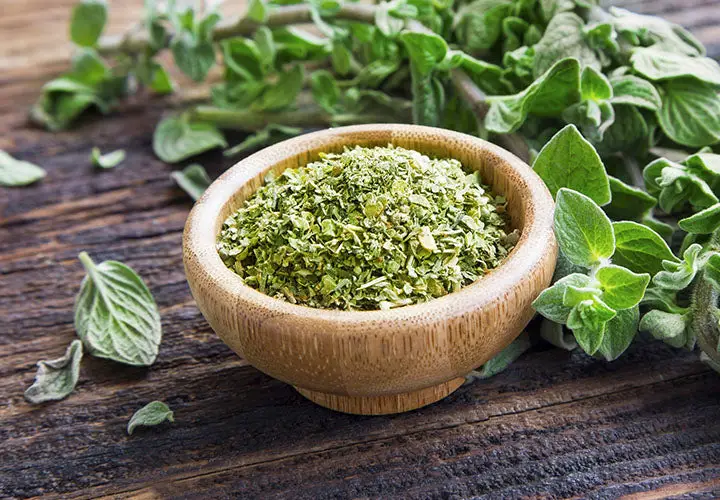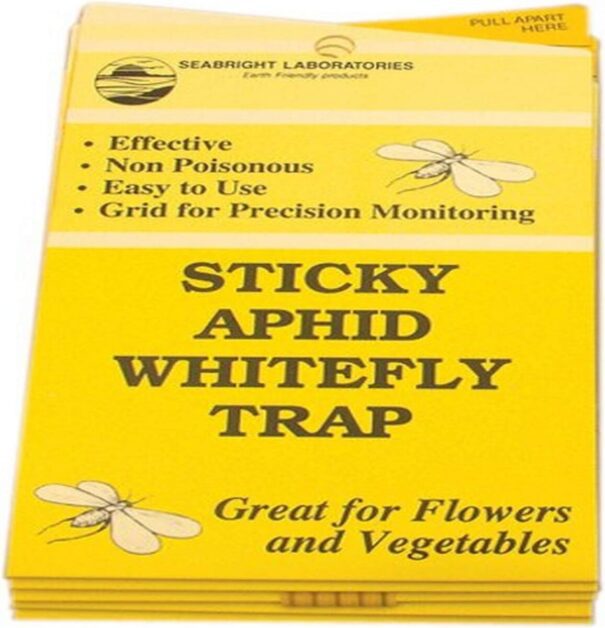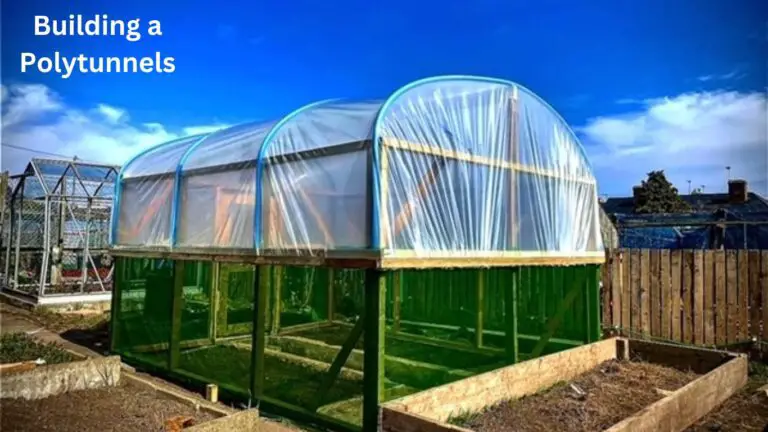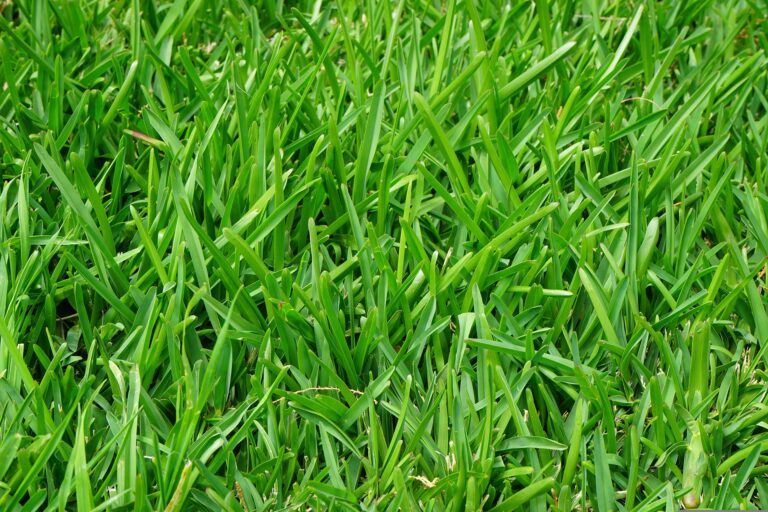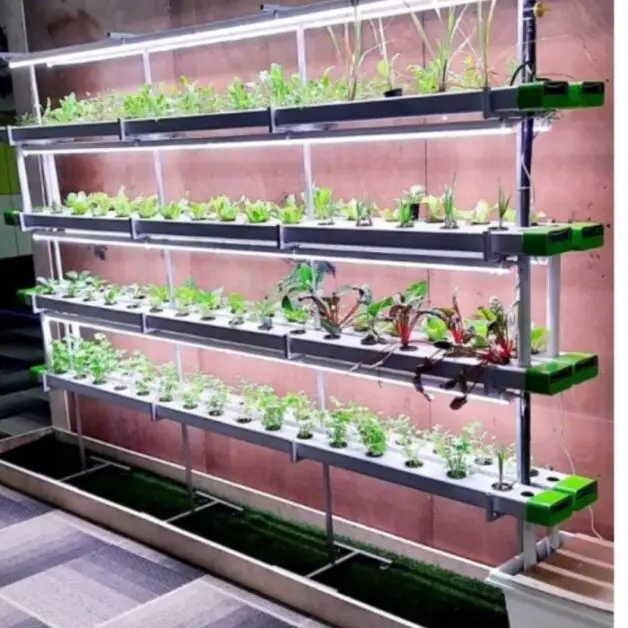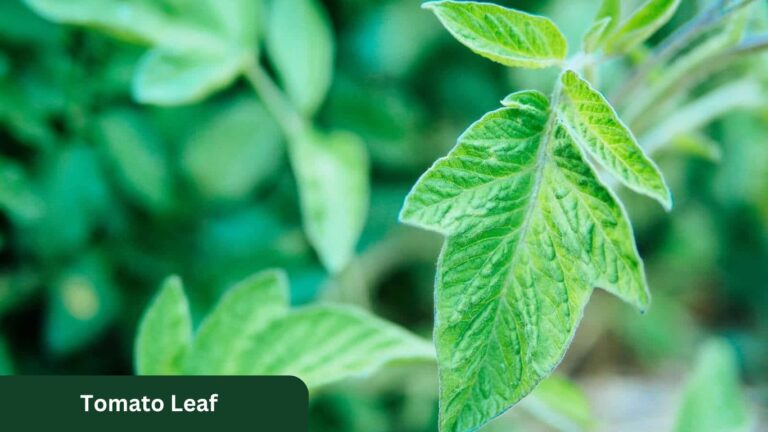Growing Oregano in the Culinary Garden
Are you looking to add some fresh herbs to your culinary creations? Look no further than growing oregano in your garden! This versatile herb is not only easy to grow, but it also adds a burst of flavor to a variety of dishes.
Did you know that oregano is actually a member of the mint family? It’s true! And just like mint, oregano can be invasive if not properly contained. But don’t let that scare you off – with a little bit of planning and care, you can successfully grow oregano in your garden.
Not only is oregano a delicious addition to your cooking, but it also has numerous health benefits. It’s high in antioxidants, has anti-inflammatory properties, and may even help with digestion.So why not give growing oregano a try? With its easy cultivation and numerous benefits, it’s a great addition to any culinary garden. Plus, you’ll have the satisfaction of knowing that you grew it yourself!
In this blog post, we’ll dive into the details of how to grow and care for oregano, so you can start enjoying its flavor and health benefits in your own cooking.
Table of Contents
The Importance of Oregano in the Culinary World
Oregano, also known as Origanum vulgare, is a herb that holds immense importance in the culinary world. Its distinct flavor and aroma have made it a staple in various cuisines, ranging from Italian and Mediterranean to Mexican and Middle Eastern. Oregano not only adds a delightful zing to dishes but also offers a plethora of health benefits.
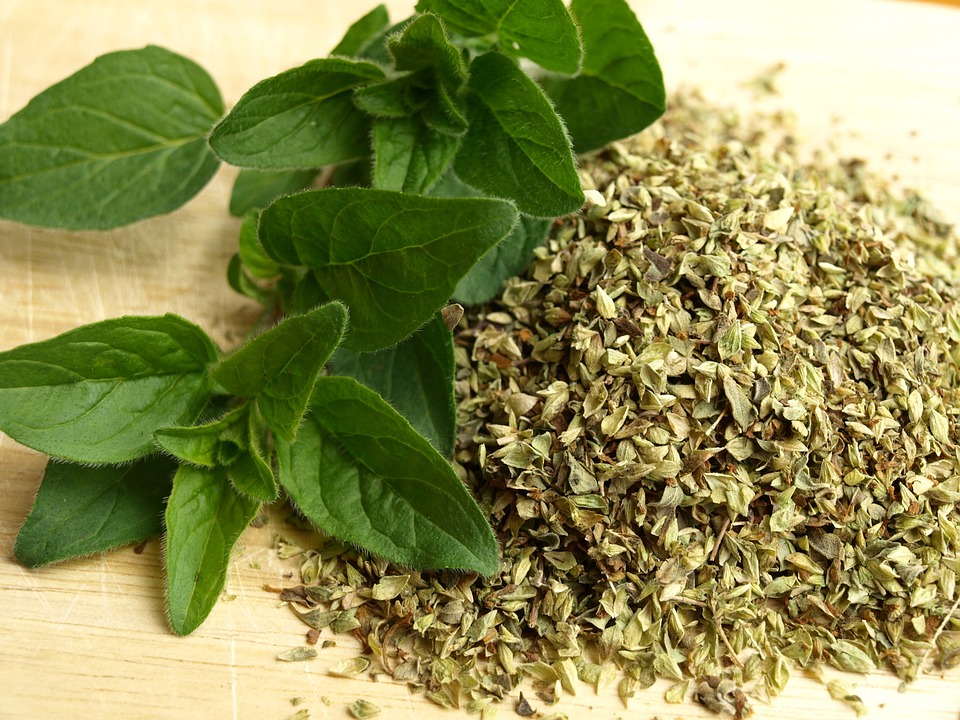
- Rich in Antioxidants:
- Oregano is packed with antioxidants, which combat damage caused by harmful free radicals in the body.
- These free radicals are linked to chronic diseases like cancer and heart disease.
- Oregano and oregano oil are particularly high in antioxidants, including carvacrol and thymol.
- Incorporating oregano into your diet can provide a hearty dose of antioxidants to support overall health.
- May Help Fight Bacteria:
- Oregano contains compounds with potent antibacterial properties.
- Test-tube studies have shown that oregano essential oil can block the growth of bacteria like Escherichia coli and Pseudomonas aeruginosa.
- It’s effective against various bacterial strains, making it a valuable herb for immune health.
- Potential Anti-Cancer Properties:
- Oregano’s antioxidants may aid in cancer prevention.
- In test-tube studies, oregano extract halted the growth of human colon cancer cells and helped kill them off.
- Carvacrol, a component in oregano, also suppressed the growth and spread of colon cancer cells.
- Keep in mind that these studies used concentrated amounts of oregano, so further research is needed.
- Anti-Inflammatory and Antimicrobial:
- Oregano has anti-inflammatory and antimicrobial properties.
- It can help regulate blood sugar, relieve inflammation, and fight infections.
- Phytonutrients, especially carvacrol, contribute to these benefits.
- Nutrient-Rich:
- Oregano provides essential nutrients, including vitamins A, C, and K, as well as minerals like iron, calcium, and manganese.
- Just one teaspoon of dried oregano fulfills about 8% of your daily vitamin K needs.
- Versatile Culinary Use:
- Oregano’s strong flavor and subtle sweetness make it a staple herb in many cuisines.
- Sprinkle it on pizzas, mix it into pasta sauces, or season roasted vegetables.
- Bakers also incorporate oregano into bread and pastry recipes for a unique twist.
Remember, while enjoying oregano’s delightful taste, you’re also reaping its health benefits! 🌿🍕🥗 So, whether you’re a seasoned gardener or an aspiring cook, stay tuned for a comprehensive dive into the wonderful world of oregano.
Selecting the Right Variety of Oregano for Your Garden
Oregano is a versatile and aromatic herb that adds a distinct flavor to a wide range of dishes. However, with several varieties available, it is important to select the right type of oregano for your garden to ensure optimal growth and flavor.
| Variety | Advantages | Disadvantages | Characteristics |
|---|---|---|---|
| Common Oregano | – Woody perennial herb with pungent flavor. | – May not be as visually striking as ornamental varieties. | – Squared stems, scented ovate leaves. |
| – Excellent for Mediterranean dishes. | – Flowers in white, pink, or purple clusters. | – Harvest leaves in summer before blooming. | |
| – Drought-tolerant and easy to grow. | |||
| Syrian Oregano | – Subtle spicy kick with mint flavors. | – Requires well-drained soil and hot climates. | – Gray-green oval leaves, grows up to 4ft tall. |
| – Commonly used in Middle Eastern cuisines. | – Avoid overwatering and high humidity. | ||
| Greek Oregano | – Strong flavors for Italian and Spanish dishes. | – Small dark-green leaves, tiny white flowers. | – Harvest before flowering for rich flavors. |
| – Ideal for pizzas, pasta sauces, soups, and casseroles. | – Thrives in hot climates and dry soil. | ||
| Dittany of Crete | – Ornamental variety with attractive appearance. | – May lack strong flavor for culinary use. | – Clusters of pink or purple flowers. |
| – Suitable for hanging baskets, borders, and pollinator gardens. | – Not recommended for cooking. | – Compact growth habit. | |
| Marjoram | – Delicate flavor, similar to oregano. | – Less intense taste compared to other oregano types. | – Often used interchangeably with oregano. |
| – Used in Mediterranean and Middle Eastern cuisines. | – Grows well in containers and garden beds. | – Small white or pink flowers. | |
| Wild Za’atar | – Aromatic and flavorful. | – May be less common and harder to find. | – Used in Middle Eastern cuisine. |
| – Used in za’atar spice blends. | – Requires well-drained soil and full sun. | – Gray-green leaves, white flowers. | |
| Kent Beauty | – Ornamental variety with unique appearance. | – Not suitable for culinary use. | – Cascading stems with pink bracts resembling flowers. |
| – Ideal for hanging baskets and containers. | – Lacks strong oregano flavor. | – Attracts pollinators. | |
| Golden Greek | – Culinary oregano with robust flavor. | – May not be as visually striking as ornamental varieties. | – Small leaves, white flowers. |
| – Adds depth to Italian and Greek dishes. | – Requires well-drained soil and full sun. | ||
| Hot and Spicy | – Intense flavor for cooking. | – May not have ornamental appeal. | – Tender leaves with fragrant aroma. |
| – Elevates stews, quiches, and sauces. | – Grows well in full sun and fertile soil. | – Purple, white, or pink flowers. | |
| Kirigami | – Ornamental variety suitable for hanging baskets and ground cover. | – Not meant for culinary use. | – Compact growth, attractive foliage. |
| – Attracts pollinators. | – Flavorless leaves. | – Ideal for containers and borders. |
Remember to choose the variety that best suits your gardening goals, whether it’s for culinary use or ornamental purposes! 🌿🌼🍽️By carefully choosing the right variety, you can ensure a bountiful supply of fresh oregano to enhance your culinary creations.
Understanding the Ideal Growing Conditions for Oregano
Oregano is a versatile herb that can thrive in a variety of growing conditions, but it requires specific conditions to truly flourish. Understanding these ideal growing conditions is essential for cultivating healthy and flavorful oregano plants.
Preparing the Soil for Oregano Cultivation
Preparing the soil for oregano cultivation is a crucial step in ensuring optimal growth and flavor of this versatile herb. Oregano thrives in well-draining soil that is rich in organic matter. Before planting, it is important to assess the soil quality and make any necessary amendments to create an ideal growing environment.

- Soil pH Testing:
- Test the soil’s pH level using a reliable soil testing kit.
- Oregano thrives in a slightly acidic to neutral pH range of 6.0 to 7.0.
- Adjust the pH if necessary:
- Low pH (Acidic): If the pH is too low, add agricultural lime to raise it to the desired level.
- High pH (Alkaline): If the pH is too high, use sulfur or peat moss to lower it.
- Follow recommended application rates to avoid overcorrection.
- Incorporating Organic Matter:
- Enhance soil quality by adding organic matter:
- Compost: Mix well-rotted compost into the soil.
- Well-Rotted Manure: Incorporate aged manure for improved fertility.
- Leaf Mold: Use decomposed leaves to enhance soil structure and drainage.
- Work these organic amendments into the top 6 to 8 inches of soil before planting oregano.
- Enhance soil quality by adding organic matter:
- Nutrient Boost:
- Organic matter provides essential nutrients:
- Nitrogen: Supports leaf growth and overall plant health.
- Phosphorus: Encourages root development.
- Potassium: Enhances disease resistance and stress tolerance.
- Adequate nutrients promote robust oregano growth and flavorful leaves.
- Organic matter provides essential nutrients:
Remember, a well-prepared soil sets the stage for a thriving oregano plant, whether you’re growing it in your garden or a container! 🌿🌱🌞By preparing the soil properly, gardeners can lay the foundation for successful oregano cultivation and enjoy a bountiful harvest of flavorful leaves.
Propagation Methods for Oregano Plants
When it comes to propagating oregano plants, there are several methods that can be utilized. The most common and effective methods include seed propagation, division, and stem cuttings. Each method has its own advantages and it is important to choose the one that suits your needs and circumstances.
| Propagation Method | Steps | Timing | Advantages | Disadvantages |
|---|---|---|---|---|
| Seed Propagation | 1. Soak seeds in water or place in a plastic bag with a moist paper towel for 2 weeks. 2. Sow seeds ¼ inch deep in well-draining soil. 3. Thin successful seedlings to 6 inches apart. 4. Keep soil moist until germination. 5. Transplant seedlings after the last frost. 6. Provide full sun and well-draining soil. | Start seeds indoors 4-6 weeks before the last frost date. Transplant seedlings after the threat of frost has passed. | Low cost, large number of plants, genetic diversity. | Slow germination, inconsistent results, may not maintain parent plant traits. |
| Stem Cuttings | 1. Cut a 3-5 inch stem from a healthy oregano plant. 2. Remove lower leaves, leaving a few at the top. 3. Dip the cut end in rooting hormone or honey solution. 4. Plant in well-draining soil or water. 5. Keep moist and provide bright, indirect light. 6. Wait for roots to form, usually within 2 weeks. | Late spring to early summer, aligning with the plant’s natural growth cycle. | Quick and easy, high success rate, maintains parent plant traits. | Limited number of plants, requires healthy parent plant. |
| Division | 1. Divide an established oregano plant into smaller sections. 2. Ensure each section has roots and foliage. 3. Replant in new pots or directly into the garden. 4. Provide full sun and well-draining soil. | When the plant reaches a certain size and has multiple well-developed stems. | Maintains parent plant traits, larger plants, suitable for transplanting. | Requires established plant, limited number of plants. |
Sowing Oregano Seeds: Step-by-Step Guide
Growing oregano from seeds is an enjoyable and rewarding experience for any home gardener. By following a step-by-step guide, you can ensure successful germination and establish healthy oregano plants in your garden.
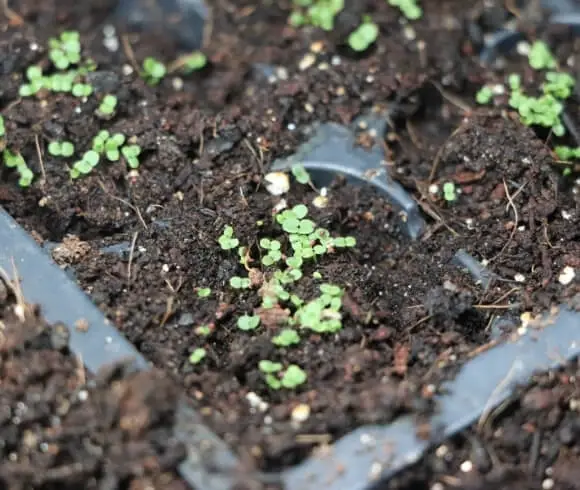
- Select a sunny location in your garden with well-draining soil to sow oregano seeds, ensuring it receives 6-8 hours of direct sunlight daily.
- Prepare the soil by loosening it and removing weeds and debris to create a favorable environment for seed germination.
- Sow the oregano seeds on the soil surface, gently pressing them in without covering them completely to allow light for germination.
- Water the soil gently using a fine mist spray or a watering can with a rose attachment, avoiding excessive moisture that can hinder germination.
- Maintain the soil’s moisture level by misting regularly, ensuring it remains consistently moist but not waterlogged.
- After 7-14 days, tiny oregano seedlings should emerge from the soil; continue gentle watering and provide adequate sunlight.
- As the seedlings grow, thin them out to provide ample space for each plant to thrive and develop successfully.
By following these simple steps, you can successfully sow oregano seeds and begin your journey to a bountiful oregano harvest. As your plants grow and thrive, you can look forward to adding the distinct and delightful flavor of fresh oregano to your culinary creations.
Transplanting Oregano Seedlings: Best Practices
When it comes to transplanting oregano seedlings, following the best practices is crucial for ensuring their successful establishment in a new location.

- Timing for Transplantation:
- Transplant oregano seedlings when they have developed a strong root system.
- Ideal timing is around 6 to 8 weeks after sowing the seeds.
- Choose a period with favorable weather conditions for successful establishment.
- Soil Preparation:
- Oregano thrives in well-draining soil with a pH range between 6.0 and 8.0.
- Adjust soil pH if needed:
- Low pH (Acidic): Add agricultural lime to raise pH.
- High pH (Alkaline): Use sulfur or peat moss to lower pH.
- Incorporate organic matter:
- Compost: Mix well-rotted compost into the soil.
- Well-Rotted Manure: Enhance soil fertility.
- Leaf Mold: Improve soil structure and drainage.
- Weed and Debris Removal:
- Clear the planting area of any weeds, grass, or debris.
- Ensure unobstructed growth for the oregano seedlings.
By preparing the soil adequately, you provide a healthy foundation for the oregano seedlings to establish themselves and grow vigorously.
Proper Watering Techniques for Oregano Plants

Oregano plants, like many herbs, have specific watering needs to ensure their optimal growth and health. Understanding the proper watering techniques for oregano plants is crucial to maximize their flavor and productivity. Overwatering or underwatering can lead to poor growth, weak flavor, and even plant diseases.
Steps for Watering Oregano Plants:
- Test the soil moisture by pressing your fingertip into the top inch of soil.
- If the top inch is dry, it’s time to water your oregano.
- Aim for a thorough watering that mimics a gentle rain, saturating the soil to reach the roots without causing a flood.
- Balance is key; avoid overwatering or underwatering to prevent root rot or stressing the plants.
- Water oregano plants when the top inch of soil feels dry, but do not let the soil completely dry out.
- Adjust watering frequency based on the plant’s growth stage and local weather patterns, increasing watering during active growth periods and reducing it during dormancy.
- Use filtered water at room temperature to avoid shocking the plant’s system.
- Avoid overhead watering to prevent foliage complications; instead, apply water directly to the soil.
- For potted oregano, adjust watering based on the container’s size and material, ensuring proper drainage to prevent waterlogging.
- After repotting, let the soil dry out before the next watering.
- Water thoroughly on a less-frequent basis, allowing the soil to dry between watering sessions.
- Water in the early morning hours to efficiently reach the root system and minimize evaporation.
Fertilizing Oregano: Dos and Don’ts
Fertilizing oregano is an essential aspect of maintaining healthy and thriving plants. However, it is crucial to know the dos and don’ts to ensure you provide the necessary nutrients without causing harm. By following these guidelines, you can maximize the growth and flavor of your oregano.
| Aspect | Dos | Don’ts |
|---|---|---|
| Timing | – Do fertilize oregano sparingly. | – Don’t over-fertilize; it can lead to excessive growth and dilute flavor. |
| Type of Fertilizer | – Do use a balanced, slow-release fertilizer. | – Don’t use high-nitrogen fertilizers; they promote leafy growth but reduce flavor. |
| – Do opt for organic options like compost or well-rotted manure. | – Don’t use chemical fertilizers excessively; they may harm beneficial soil organisms. | |
| Application Method | – Do apply fertilizer around the base of the plant. | – Don’t apply directly to leaves; it can cause burns. |
| – Do follow recommended application rates based on package instructions. | – Don’t apply during extreme weather (e.g., heatwaves or frost). | |
| Frequency | – Do fertilize oregano once or twice during the growing season. | – Don’t fertilize during winter dormancy. |
| Watering After | – Do water the plant after fertilizing to help nutrients reach the roots. | – Don’t fertilize when the soil is dry; it can lead to nutrient imbalances. |
| Observation | – Do observe the plant’s response to fertilization. Adjust as needed. | – Don’t ignore signs of nutrient deficiency (e.g., yellowing leaves). |
| Mulching | – Do apply organic mulch (e.g., straw or shredded leaves) around the base of the plant. | – Don’t use synthetic mulch; it may hinder nutrient absorption. |
| Avoid Overfeeding | – Do prioritize soil health; healthy soil reduces the need for excessive fertilization. | – Don’t assume more fertilizer is better; moderation is key. |
Remember, a balanced approach ensures healthy oregano growth and flavorful leaves! 🌿🌱🌞
Pruning Oregano for Maximum Growth and Flavor
In order to ensure maximum growth and flavor in your oregano plants, proper pruning techniques are essential. Pruning plays a crucial role in maintaining the health and vigor of the plant, allowing it to produce an abundance of aromatic leaves packed with flavor.

- Timing: Prune oregano in early spring, just as new growth begins to emerge, or after flowering to stimulate new growth and enhance flavor.
- Techniques:
- Hard pruning: Remove around one-third of the plant’s overall foliage at a time, making clean cuts just above a healthy set of leaves or nodes.
- Mid-season pruning: Prune oregano after flowering to encourage new growth and maintain a bushy, flavorful plant.
- Selective pruning: Remove specific stems to maintain the overall shape and health of the plant.
- Rejuvenation pruning: Cut the entire plant back to ground level to stimulate new growth.
- Tools: Use clean and sharp pruners, garden scissors, or shears for larger oregano plants.
- Common mistakes to avoid:
- Cutting too much of the plant at once, which can stress the oregano and hinder its regrowth.
- Pruning during cold weather or when the plant is dormant.
- Tips:
- Wear gloves during pruning to protect against potential skin irritation from the oregano’s oils.
- Use the pruned stems for cooking, as they still retain their aromatic qualities.
- Prune after flowering to stimulate new growth and enhance the flavor of the oregano.
- Prune oregano in early summer before the flowers develop to prevent self-seeding and maintain a bushy, flavorful plant.
- Focus on older stems to promote new growth.
- Prune oregano easily from stem cuttings, with roots developing in a couple of weeks.
- Oregano is hardy across much of the United States, with many varieties hardy to Zone 4. If you live in a colder climate, mulch the area around your oregano plants to protect the roots. If you’re growing it in containers, simply bring them inside and set them in a sunny location during winter.
- Harvest oregano in the morning after the dew has dried for the best flavor.
- Cut stems as needed, or harvest in bulk by cutting back half of the plant’s height.
Proper pruning techniques, combined with regular care and attention, can take your oregano plants to new heights. By following these guidelines and keeping a watchful eye on your plants, you’ll be rewarded with a bountiful harvest of flavorful oregano leaves that can elevate your culinary creations to new levels of deliciousness.
After using the Fiskars Garden Herb Snips for several gardening sessions, I must say I’m thoroughly impressed. The ergonomic design fits comfortably in my hand, allowing for extended periods of use without causing fatigue. The sharpness of the blades is exceptional, effortlessly cutting through herbs with precision and ease. I appreciate the attention to safety with the inclusion of a blade guard, ensuring peace of mind when not in use. Overall, these herb snips have become an indispensable tool in my gardening arsenal, making tasks quicker, more efficient, and enjoyable. Highly recommended for anyone looking for reliable and efficient herb snips.
- High-Quality Construction: The Fiskars Garden Herb Snips feature stainless steel blades that make clean cuts and stay sharp through heavy use. This ensures durability and long-lasting performance.
- Versatility: These herb snips are designed for various gardening tasks, including harvesting herbs, flowers, fruits, and vegetables. Their multi-use design makes them suitable for a wide range of gardening activities.
- Comfortable Grip: The soft-grip handle provides comfort and control, reducing hand fatigue during extended use. This ergonomic design enhances the overall user experience, allowing for precise and effortless cutting.
- Pointed Blade Tips: The pointed blade tips offer added control for snipping in tight spaces, enabling users to trim with precision even in confined areas of the garden.
- Easy to Clean: The blades are easy to clean, ensuring hygiene and preventing the spread of diseases between plants. This feature contributes to overall garden health and promotes optimal plant growth.
- Limited Reach: With a blade length of 5 inches, these herb snips may have limited reach, especially for cutting larger or harder-to-reach plants. Users may need to supplement them with longer tools for certain tasks.
- Price: While the quality justifies the price for many users, some may find the initial cost of these herb snips relatively high compared to other similar gardening tools on the market.
- Single-Handed Use: The design of these snips may require single-handed use, which could be inconvenient for individuals who prefer or require tools that can be operated with both hands simultaneously.
- Sheath Attachment: Some users may find the sheath attachment mechanism less secure or durable over time, potentially leading to the loss of the sheath or difficulty in keeping it attached during use.
- Blade Maintenance: While the stainless steel blades are durable, they may require occasional maintenance, such as sharpening, to ensure optimal cutting performance over the long term.
Managing Common Pests and Diseases in Oregano Plants
Common pests and diseases can pose a threat to the health and productivity of your oregano plants. It is essential to be proactive in managing these issues to ensure the longevity and vigor of your crop. By implementing effective strategies, you can minimize the impact of pests and diseases on your oregano plants and enjoy a bountiful harvest.
Teh following table explains about the managing common pests and diseases in oregano plant
| Issue | Symptoms | Treatment | Effects on Plants |
|---|---|---|---|
| Aphids | – Clusters of green or black insects on undersides of leaves. | – Handpick or spray with water to dislodge them. | – Sucking sap weakens plants, stunts growth. |
| Beetles | – Irregular holes in leaves. | – Remove by hand or use insecticides if infestation is severe. | – Defoliation affects overall health. |
| Whiteflies | – Tiny white insects on leaf undersides. | – Use yellow sticky traps or insecticidal soap. | – Feeding causes yellowing and wilting of leaves. |
| Spider Mites | – Fine webbing on leaves, yellow stippling, and leaf discoloration. | – Spray with water to dislodge mites or use neem oil. | – Reduced photosynthesis and plant vigor. |
| Powdery Mildew | – White powdery spots on leaves. | – Remove infected leaves promptly. Apply fungicides if needed. | – Reduced growth and yield due to impaired photosynthesis. |
| Gray Mold | – Grayish mold on leaves and stems. | – Improve air circulation and avoid overhead watering. | – Rotting of affected plant parts. |
| Fusarium Wilt | – Yellowing, wilting, and eventual death of plant. | – No cure; remove infected plants to prevent spread. | – Vascular damage disrupts water and nutrient transport. |
| Black Spot | – Black or dark brown spots on leaves. | – Prune affected leaves and improve air circulation. Apply fungicides. | – Reduced photosynthesis and overall plant health. |
Remember to regularly inspect your oregano plants and take prompt action to prevent or manage these issues! 🌿🪲🌱
I recently tried the HGSLWFT 5 Count Sticky White Fly Trap, and I must say, it exceeded my expectations. As someone who has been gardening for years, combating pests like white flies has always been a challenge. However, this sticky trap proved to be an effective solution. Its bright yellow color and weather-proof design attracted a variety of flying insects, including white flies, moths, and thrips. I appreciated how easy it was to hang directly on my plants without causing any damage, thanks to the included wire twist.
Within a short period, I noticed a significant reduction in the pest population around my garden. Overall, I’m highly satisfied with the performance of this product and would definitely recommend it to fellow gardeners dealing with similar issues.
✅ Easy to Use: These traps come with a wire twist for easy hanging directly on plants or branches without causing any damage.
✅ Long-Lasting: The traps are weather-proof and long-lasting, providing continuous protection against flying menaces for extended periods.
✅ Non-Toxic: Unlike some pest control methods, these traps do not involve the use of toxins, making them safer for the environment and non-toxic to beneficial insects.
✅ Versatile: Suitable for both indoor and outdoor use, offering flexibility in pest control strategies.
❌ Indoor Use Limitations: Due to their stickiness and potential messiness, these traps may not be ideal for indoor use in areas where cleanliness is a concern.
❌ Adhesion Quality: While most users praise the adhesion of the traps, there are mixed opinions about the stickiness, with some finding it too strong and others feeling it could be improved.
❌ Limited Coverage: Depending on the size of the infestation or area to be protected, the coverage provided by a single pack of traps may be insufficient, requiring multiple packs for adequate coverage.
❌ Price: The cost of the product, especially when considering the need for multiple packs for larger areas, may be a deterrent for some users compared to alternative pest control methods.
Harvesting Oregano Leaves: When and How to Do It

Harvesting oregano leaves at the right time and using the proper techniques is crucial to maximize the flavor and aroma of this popular herb. Here are the key points for harvesting oregano leaves:
- Timing: Harvest oregano just before it starts to flower. This is when the leaves have the highest concentration of essential oils.
- Tools: Use clean, sharp scissors or pruning shears.
- Cutting Technique: Trim the stems about 4-6 inches above the ground, right above a set of healthy leaves. This encourages new growth.
- Quantity: Avoid harvesting more than one-third of the leaves at once to maintain the plant’s vitality.
- Handling: Handle the leaves gently to preserve flavor. Wash them in cool water and pat dry with a clean towel.
- Drying: To dry the leaves, hang the stems upside down in a well-ventilated area or use a food dehydrator or low-temperature oven.
Happy oregano harvesting! 🌿
Drying and Storing Oregano for Long-Term Use
Drying and storing oregano properly is essential for preserving its flavors and aromas, allowing you to enjoy the herb’s unique qualities long after it has been harvested. When it comes to drying oregano, there are a few methods you can choose from, each with its own benefits.
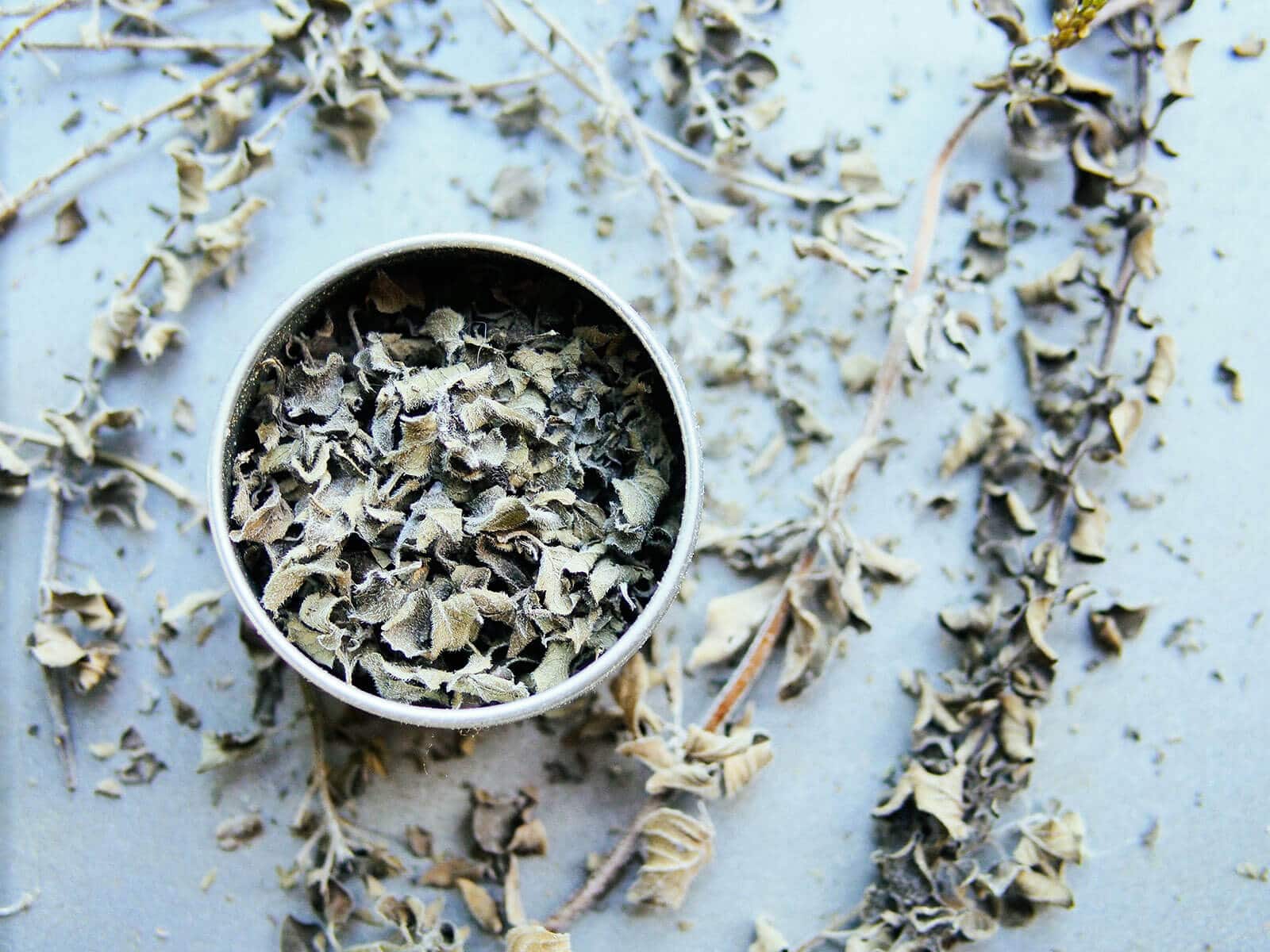
Drying Oregano:
- Harvest oregano sprigs: Fresh oregano sprigs are essential for long-lasting dried oregano.
- Remove leaves from stems: Separate leaves from stems, except for air drying, where you keep them whole.
- Clean leaves: Rinse leaves thoroughly to remove dust and dry with a salad spinner or paper towel.
- Choose drying process:
- Dehydrator: Place leaves on a dehydrator tray in a single layer and set the temperature to 105ºF/40°C. Dry for 1-3 hours or until leaves are dry and brittle.
- Oven: Spread leaves in a single layer on a baking sheet/s covered with parchment paper. Bake at the lowest temperature until leaves are dry and brittle.
- Air drying: Bunch leaves together (approximately an inch in diameter) and hang upside down in a dark and dry area. Once dry, crumble leaves into a container.
- Store dried oregano: Transfer dried oregano to airtight containers, such as glass jars with tight-fitting lids or vacuum-sealed bags.
- Label and date containers: Clearly label and date each container to track freshness.
- Store in a cool and dark place: Keep containers away from direct sunlight, heat, and moisture to preserve quality.
Additional information:
- Moisture content: Aim for a final moisture content of less than 10% (wet basis) to ensure stable matrices and inhibit or limit microbial growth.
- Drying process: The drying process can enhance or facilitate other operations, such as extraction or mechanical comminution.
- Combined drying methods: Literature studies have shown that combined drying methods, such as convective-microwave or freeze-drying, can achieve high-quality dried products but may be more laborious to apply.
- Simplified protocols: This study investigates the feasibility of applying simplified protocols based on microwave irradiation to achieve dried oregano products with good quality, improving production yields, and facilitating industrial-scale application.
Creative Culinary Uses of Fresh Oregano
Oregano is a versatile herb that can add a burst of flavor to a wide range of culinary creations. Its distinct aroma and taste make it a beloved ingredient in Mediterranean and Italian cuisines. From soups and stews to pasta dishes and sauces, fresh oregano leaves can elevate the flavors of your favorite recipes.
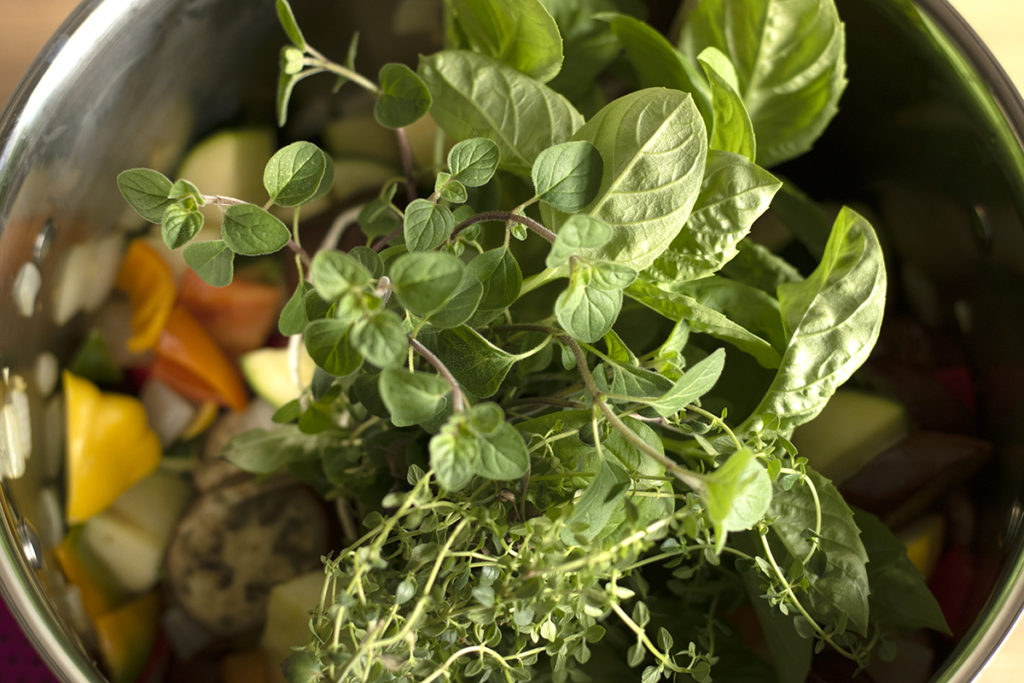
Here are some practical ways to use fresh oregano in your culinary creations:
- Salad Dressings and Marinades:
- Fresh oregano adds a robust flavor to homemade salad dressings and marinades. Combine chopped oregano leaves with ingredients like lemon juice, garlic, olive oil, and vinegar to create zesty dressings or flavorful marinades for meats and vegetables.
- Infused Oils and Vinegars:
- Infusing oregano into oils or vinegars not only imparts its aromatic qualities but also extends the herb’s shelf life. Here’s how:
- Gently bruise the oregano leaves to release their essential oils.
- Add the bruised leaves to a bottle filled with oil (such as olive oil) or vinegar (such as red wine vinegar).
- Seal the bottle and let it sit in a cool, dark place for a few weeks.
- The resulting infused oil or vinegar can be drizzled over roasted veggies, used in marinades, or added to sauces for that delightful oregano kick.
- Infusing oregano into oils or vinegars not only imparts its aromatic qualities but also extends the herb’s shelf life. Here’s how:
Enjoy experimenting with fresh oregano—it’s a versatile herb that elevates your dishes! 🌿🍽️
Oregano Companion Planting: Enhancing Your Culinary Garden
Oregano is not only a versatile herb in the kitchen but also a valuable companion in the garden. Companion planting, the strategic placement of plants to enhance growth and deter pests, is a practice that has been utilized for centuries. When it comes to oregano, incorporating it into your culinary garden can greatly benefit the overall health and productivity of your plants.
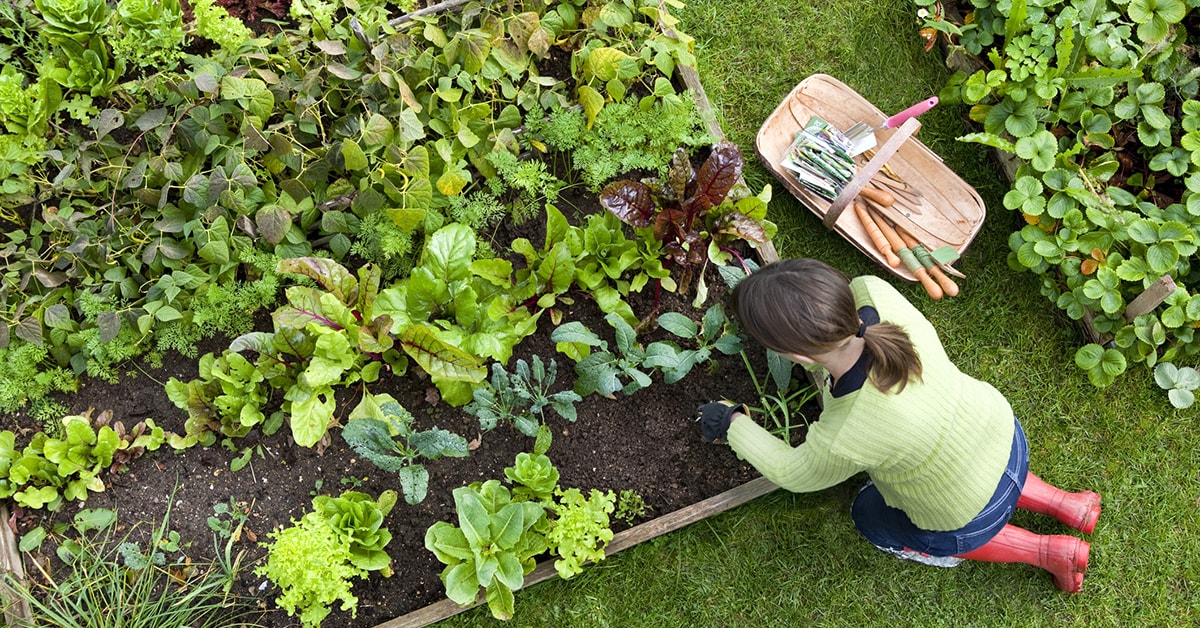
- Natural Pest Repellent:
- Oregano emits a strong fragrance that naturally deters harmful insects like aphids, cabbage worms, and spider mites.
- Planting oregano alongside other vegetables and herbs creates a protective barrier, safeguarding your plants from infestations.
- The aromatic oregano scent can also attract beneficial insects like bees and butterflies, aiding in pollination.
- Soil Enrichment and Flavor Enhancement:
- Oregano releases essential oils into the soil.
- These oils enrich the soil with nutrients beneficial to neighboring plants.
- Nearby plants experience enhanced flavor and aroma due to oregano’s influence.
- Moisture Retention and Weed Control:
- Oregano’s vigorous growth and dense foliage provide shade and protection to neighboring plants.
- This helps retain moisture in the soil.
- Additionally, oregano’s presence reduces weed growth around companion plants.
Table: Oregano Companion Planting
| Plant Type | Plant Name | Benefits |
|---|---|---|
| Herbs | Basil (Ocimum basilicum) | Repels pests, enhances flavor, and improves growth. |
| Herbs | Thyme (Thymus vulgaris) | Repels pests, improves flavor, and thrives in similar conditions. |
| Herbs | Rosemary (Rosmarinus officinalis) | Repels pests, improves flavor, and thrives in similar conditions. |
| Herbs | Common sage (Salvia officinalis) | Repels pests, improves flavor, and thrives in similar conditions. |
| Vegetables | Tomatoes (Solanum lycopersicum) | Repels pests and enhances flavor. |
| Vegetables | Peppers (Capsicum annuum) | Repels pests and enhances flavor. |
| Vegetables | Cabbage (Brassica oleracea var. capitata) | Repels pests and enhances flavor. |
| Fruits | Apple trees (Malus domestica) | Attracts beneficial insects and deters pests. |
| Fruits | Pear trees (Pyrus communis) | Attracts beneficial insects and deters pests. |
| Flowers | Lavender (Lavandula angustifolia) | Repels pests, improves flavor, and thrives in similar conditions. |
| Vegetables | Cucumbers (Cucumis sativus) | Can be grown together with caution. |
| Fruits | Strawberries (Fragaria × ananassa) | Can be grown together with caution. |
| Vegetables | Asparagus (Asparagus officinalis) | Can be grown together with caution. |
Plants to Avoid as Oregano Companions:
- Cucumbers: Excessive watering needs can lead to root rot for oregano.
- Mint: Aggressive grower that can crowd out oregano and other plants.
- Watermelon: Requires lots of water, making them a poor companion for drought-tolerant plants like oregano.
- Corn: Heavy feeder that competes for soil nutrients and can shade oregano.
- Potatoes: Prefer acidic soil, while oregano likes a slightly alkaline to neutral pH range.
When planning your culinary garden, consider incorporating oregano as a companion plant. Its natural ability to repel pests and enhance the growth of surrounding vegetation makes it a valuable addition. By strategically placing oregano alongside your other herbs and vegetables, you can create a thriving and harmonious garden that not only provides delicious flavors but also promotes the overall health and productivity of your plants.
Troubleshooting Oregano Growth Issues: Tips for Success
Challenges in Growing Oregano:
- Poor drainage in soil: Oregano thrives in well-draining soil, as excessive moisture can lead to root rot and other fungal diseases. To address this problem, it is crucial to ensure that the soil has good drainage by adding organic matter or perlite to improve its texture. Regularly checking the moisture levels and adjusting watering practices accordingly can also prevent waterlogged conditions and promote healthier oregano growth.
- Inadequate sunlight: Oregano typically requires full sun to thrive and develop its aromatic leaves. Insufficient sunlight can result in leggy and weak growth, as well as a reduction in flavor and essential oil content. To mitigate this issue, it is essential to choose a suitable location for your oregano plants, preferably one that receives at least 6-8 hours of direct sunlight daily. In regions with hot summers, providing some afternoon shade can also benefit the plant and prevent scorching.
Steps to Overcome Challenges:
- Improve soil drainage: Add organic matter or perlite to improve soil texture and promote better drainage.
- Monitor moisture levels: Regularly check the soil’s moisture levels and adjust watering practices accordingly.
- Choose a suitable location: Select a location that receives at least 6-8 hours of direct sunlight daily.
- Provide afternoon shade: In hot summers, provide some afternoon shade to prevent scorching.
- Monitor sunlight exposure: Ensure the oregano plants receive adequate sunlight for optimal growth and flavor development.
By following these steps, gardeners can create an ideal environment for their oregano plants to thrive, ensuring healthy growth and flavorful harvests.
Watch video for more information:
fAQ
Why is my oregano plant not growing well?
There could be several reasons why your oregano plant is not growing well. It could be due to improper watering, inadequate sunlight, poor soil quality, or pests and diseases. Assess these factors and make the necessary adjustments to promote healthy growth.
Can I grow oregano indoors?
Yes, oregano can be successfully grown indoors. Choose a sunny location near a window and provide adequate light and proper watering. Consider using a well-draining potting mix and ensure proper air circulation to prevent fungal diseases.
Is it necessary to fertilize oregano plants?
Oregano plants generally do not require excessive fertilization. However, a light application of balanced fertilizer during the growing season can promote healthy growth. Avoid over-fertilizing, as it can lead to excessive foliage growth at the expense of flavor.
What are some common pests and diseases that affect oregano plants?
Oregano plants can be susceptible to pests such as aphids, spider mites, and whiteflies. Diseases that commonly affect oregano include powdery mildew, root rot, and leaf spot. Regularly inspect your plants for any signs of infestation or disease and take appropriate measures to control them.
When is the best time to harvest oregano leaves?
The best time to harvest oregano leaves is in the morning, after the dew has dried but before the sun is at its peak. This is when the essential oils are most concentrated in the leaves, providing maximum flavor.
How should I store harvested oregano leaves for long-term use?
To store oregano leaves for long-term use, first, wash and thoroughly dry the leaves. Then, you can either hang the stems upside down in a cool, dry place and let them air dry, or you can remove the leaves from the stems and store them in an airtight container in a cool, dark location.
Can I use fresh oregano in cooking?
Absolutely! Fresh oregano has a more intense flavor compared to dried oregano. It can be used in various dishes such as soups, stews, salads, marinades, and sauces. Just remember to adjust the quantity as fresh oregano can be stronger.
What are some plants that pair well with oregano in a culinary garden?
Oregano pairs well with plants like basil, thyme, rosemary, sage, and parsley in a culinary garden. These herbs not only complement each other in terms of flavor but also have similar growing requirements, making them ideal companions in the garden.
How can I troubleshoot oregano growth issues?
If you are facing growth issues with your oregano plant, start by assessing the growing conditions, including sunlight, watering, soil quality, and pest control. Ensure that you are providing the ideal environment for oregano growth, make any necessary adjustments, and monitor the plant’s progress.

Studied Agricultural Engineering-Plant Protection at University of California, Davis.
Head of Content writing team at Southelmontehydroponics.com

